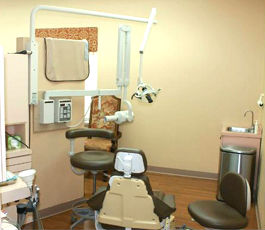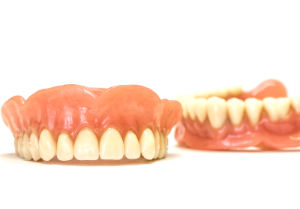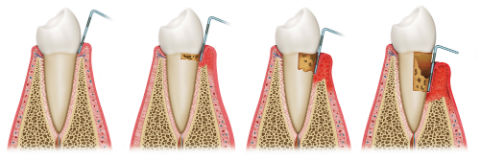General Dentistry
Teeth Cleaning

No matter how often you brush and floss, soft (plaque) and hard (calculus) deposits can still build up on your teeth. A professional teeth cleaning (also known as a prophy) is the single most effective way to remove these deposits and prevent them from causing more serious problems in the future. While a traditional teeth cleaning involves manually scraping away these deposits with special dental tools, advances in dental technologies now give you more options.
An ultrasonic cleaning, is a popular adjunct to traditional teeth cleanings. With ultrasonic scaling, an ultrasonic scaler (along with manual instrumentation) is used to remove deposits and disrupt the environment where harmful microbes and bacteria live (around the teeth and under the gums). This type of scaler uses high-frequency sound waves, vibrations and water to remove deposits. Many patients find use of an ultrasonic scaler more comfortable than the traditional method because they are quicker, quieter and can be less painful.
A deep cleaning may be recommended if excessive plaque and tartar deposits have developed below the gum line. Deep cleanings, also known as scaling and root planing, involve a two-part process: first, the stubborn deposits are removed, and then the root surfaces are smoothed. Dental anesthesia is usually necessary for this type of cleaning. A deep cleaning helps prevent periodontal disease and restores gum tissues to a healthy state.
Dental Crowns
Dental crowns are used from many reasons. These reasons include: to protect a weakened tooth, restore an already broken tooth, buildup a severely worn down tooth, cover a tooth that is weakened by an existing large filling, to correct a discolored or odd shaped tooth or to make teeth more pleasing. Crowns are made of a variety of materials. Materials include: stainless steel, yellow or white gold, porcelain fused to metal (metal underneath with tooth colored porcelain masking the metal) and full porcelain.
- Stainless steel crowns are prefabricated (crowns premade in bulk at a factory) that are used on permanent teeth primarily as a temporary fix to a permanent problem. The crown protects the tooth or filling for a short while until a permanent crown is an option. For children, a stainless steel crown is commonly used to fit over a baby tooth that's been prepared to fit it. The crown covers the entire tooth and protects it from further decay. When the primary tooth comes out to make room for the permanent tooth, the crown comes out naturally with it. In general, stainless steel crowns are used for children's teeth because they don't require multiple dental visits to put in place and are more cost- effective than custom-made crowns due to the short time they will be utilized.
- Metals used in crowns include gold alloy, other alloys (for example, palladium), or a base-metal alloy (for example, nickel or chromium). When using other crown types, more tooth structure is removed to accommodate the materials needed. Tooth wear to opposing teeth is kept to a minimum when using metal crowns. They withstand biting and chewing forces well and generally last the longest and very rarely chip or break. The metallic color is the main drawback. Metal crowns are a good choice for out-of-sight molars.
- Porcelain-fused-to-metal dental crowns can be color matched to your adjacent teeth (unlike the metallic crowns). However, more wearing to the opposing teeth occurs with this crown type compared with metal crowns. The crown's tooth colored portion can also chip or break off. Next to all-ceramic crowns, porcelain-fused-to-metal crowns look most like normal teeth. However, sometimes the metal underlying the crown's porcelain can show through as a dark line, especially at the gum line and even more so if your gums recede. These crowns can be a good choice for front or back teeth.
- All-ceramic or all-porcelain dental crowns provide better natural color match than any other crown type and may be more suitable for people with metal allergies. However, they are not as strong as porcelain-fused-to-metal crowns and they wear down opposing teeth a little more than metal or resin crowns. All-ceramic crowns are a good choice for front teeth.
- Temporary versus permanent. Temporary crowns can be made in your dentist's office, whereas permanent crowns are made in a dental laboratory. Temporary crowns are made of acrylic or stainless steel and can be used as a temporary restoration until a permanent crown is constructed by a lab.
Dental Bridges
Dental bridges have been used for centuries to replace missing teeth. Today, dental bridges are still considered one of the most durable, conservative and cost-effective options for bridging the gap between a missing tooth and surrounding teeth. Comprised of two anchoring teeth and a replacement tooth, dental bridges help prevent surrounding teeth from drifting out of position, improve chewing and speaking, and help keep your natural face shape in tact.
There are three types of dental bridges: 1) traditional dental bridges, 2) cantilever dental bridges, and 3) Maryland bridges. Traditional bridges have either dental crowns or dental implants on either side of the missing tooth, plus a replacement tooth, which is held in place by a post-like structure called a dental abutment. Cantilever dental bridges are used in cases where there are surrounding teeth only on one side of the missing tooth. Maryland bridges are made of a specialized resin that is cemented to a metal framework and cemented to the enamel of surrounding teeth.
Dental bridges typically take 2-3 weeks to complete and are less invasive than other options, such as dental implants. With good oral hygiene and regular dental visits, dental bridges can last up to 30 years.
Removable Partials and Dentures

Using dentures to replace missing teeth is not only great for your oral health; it's a great way to look and feel younger! Today, there are natural-looking and comfortable dentures for patients who need to replace missing teeth.
Made of a gum-colored acrylic base and resin replacement teeth, dentures are custom designed to fit your mouth. Dentures are a replacement for no teeth, not a replacement for teeth. The decision to have a denture placed should not be taken lightly and should be discussed in depth with your dentist before making the final decision. Having dentures reduces the ability to chew certain foods and not all patients are good candidates for dentures. This is another reason to discuss the decision with your dentist.
In some cases, dentures are made prior to the removal of the remaining teeth. This approach is taken when the patient does not want to go without teeth at any part of the process. The teeth are removed after making the denture and the dentures are inserted on the same day as tooth extraction. This is called an “immediate” denture. Immediate dentures WILL need replaced. They are only to be worn for healing purposes, about 6-8 months. The process for immediate dentures takes meticulous planning and should not be rushed. Immediate dentures aren't for everyone, though.
Removable partial dentures are great for patients who have several missing teeth scattered along the upper or lower jaw. Partials can be made with a metal base or with a tissue colored, flexible base. The process of having partials made also takes several dental visits.
Just as with your natural teeth, dentures require daily maintenance. With regular wear and tear, your dentures can last many years. During that time, you should be seen for yearly exams and the dentures may need periodic denture relines to accommodate changes in the contours of your mouth. Regular denture relines involve resurfacing the base to ensure that your dentures fit and function perfectly.
If you break your dentures, it's critical to bring them to your dentist for professional denture repair. Home denture repair kits can cause more damage and be even more costly to fix.
Periodontal Treatment
Red, swollen gums are a red flag for one thing: gum disease. If you have the symptoms, you're not alone. More than 80% of adults have some form of gum disease. Fortunately, there are many effective and pain-free gum disease treatments. For gingivitis, the mildest form of gum disease, treatment typically involves a thorough dental cleaning, followed by daily brushing and flossing. Advanced gum disease, also known as periodontal disease, requires scaling and root planing to remove stubborn deposits below the gum line. Laser gum surgery, a new alternative to scaling and root planing, uses beams of high-speed light to remove plaque and tartar buildup. If non-surgical methods of gum disease treatment are ineffective, a gingivectomy, or periodontal surgery, may be necessary.

Endodontics
Root canals get a bad wrap. But don't believe the rumors; the dreaded root canal isn't dreadful at all! Root canals are needed when either decay or an injury infects the inner tooth (the pulp). In the earliest stages of infection, you may not feel any pain at all. But when it progresses, you could have a toothache and swelling, or a dental abscess might form. Root canals remove the infection and prevent it from spreading. Thanks to laser root canals, this process is faster, more comfortable and, in many cases, more thorough than conventional root canals. Pulp capping is an alternative to root canals that are used when the infection has yet to penetrate the pulp. Pulp capping can also prevent a large dental filling from getting too close to the nerve.
Scaling and Root Planing
Surgical Tooth Extractions

TMJ Treatment
If you've been living with persistent jaw pain, ear pain and headaches, you could have TMJ – temporomandibular jaw disorder. TMJ can often be traced back to an improper bite, misaligned jaw joints, or an injury to the jaw or face. TMJ treatment from a dentist can relieve the discomfort. Although TMJ treatment varies from patient to patient, it typically involves one or several procedures, including the use of an orthotic splint, enamel reshaping, dental crowns, dental braces or night guards. The goal of TMJ treatment is to stabilize your bite so that your teeth, jaw muscles and jaw joints work properly together without strain – and without pain!
Pediatric Dental Care

